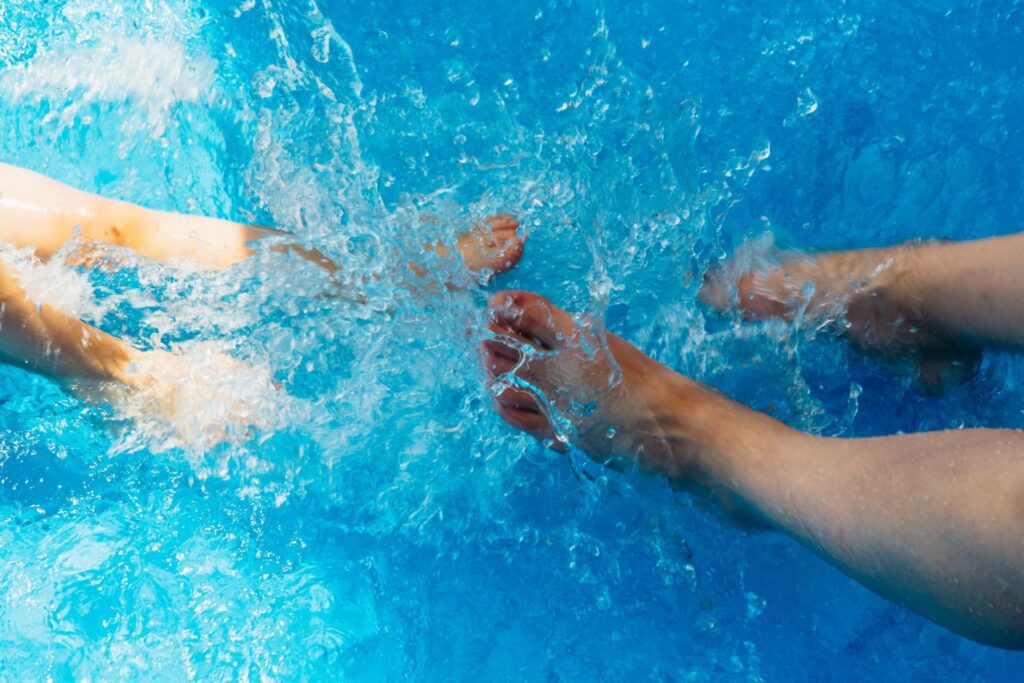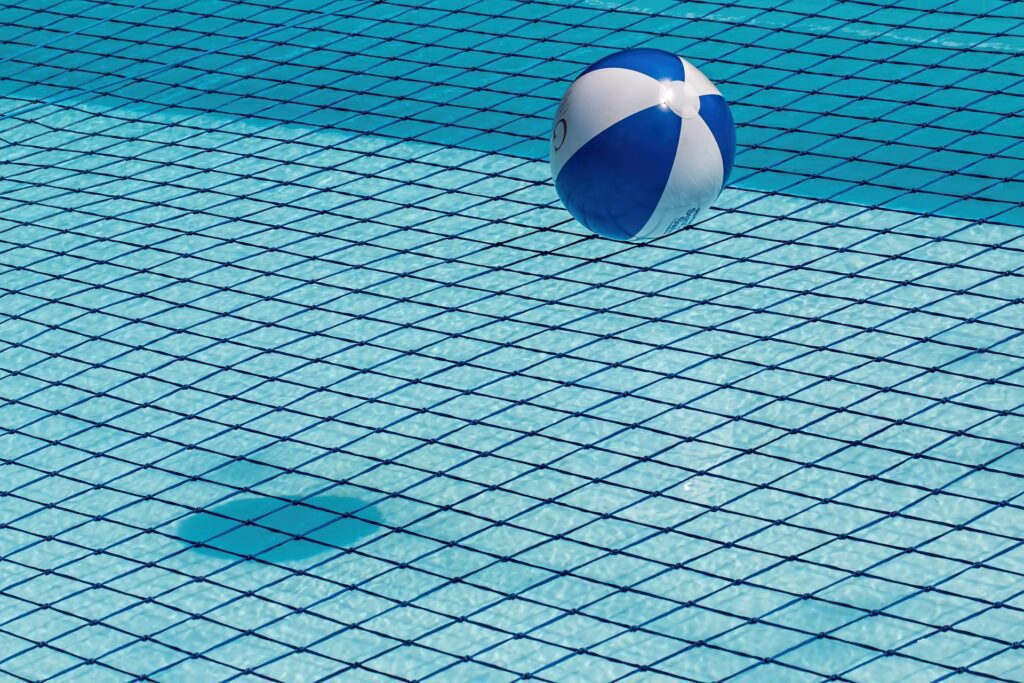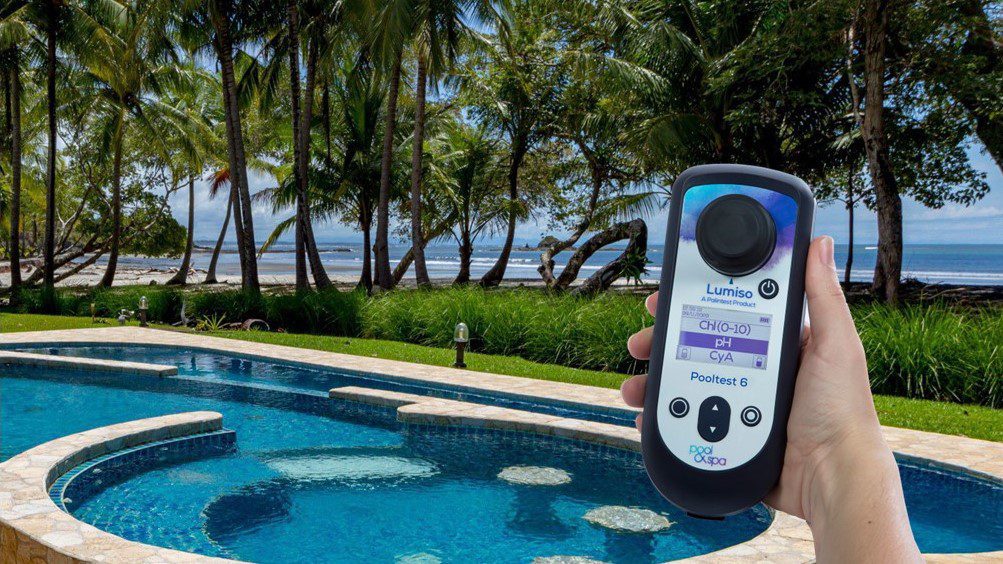03/20/2023 | pH | 9 MINUTE READ
Maintaining Pool pH Chemistry: Caring for pH Pool Sensors in the Off-season

During the warm spring and summer months, keeping your pool water clean and free from contaminants allows you keep everyone who swims in the pool healthy. There are many pieces of equipment that can help you maintain a pool’s water quality, the primary of which is a pH sensor. When you use this sensor, the readings you receive tell you if the water is acidic or alkaline. Obtaining the right water chemistry in your pool requires a pH sensor.
During the off-season, all of the equipment you use in the warmer months should be properly stored and maintained to make sure that they still work well once the off-season is over. Maintaining your pH meter allows you to extend its lifespan and continue receiving precise readings. This article is a detailed guide on how to care for pH pool sensors when they aren’t being used.

The Role of pH Sensors in Maintaining a Healthy Pool Environment
Maintaining the right chemical balance with your pool water ensures that the water is clean and that all pool components are protected from damage. If contaminants get into the pool water and aren’t promptly filtered out, your heater and pump could become less efficient.
Among the most important facets of water chemistry is pH. Your pool water’s pH is the measure of acidity or alkalinity with a scale that ranges from 0-14. All readings that come in below 7.0 are acidic. Anything above that number is alkaline. A pH of exactly 7.0 is neutral. Pools are meant to be kept at a pH range that extends from 7.4-7.8. Keeping your pool water in this pH range is essential because:
- Low pH leads to skin and eye irritation
- Unbalanced pH may damage pool liners
- High pH levels cause chlorine to be inactivated
- A low pH reading can result in corrosion
- High pH may lead to cloudy and murky water
The most effective way to measure pH levels in a pool is with a pH sensor. The majority of pH meters are sensitive to contamination, which means that regular care and attention are needed to make sure the pH sensor functions properly.

Understanding pH Sensors
Your pH meter is comprised of two or three standard parts, which include a main body component, a probe, and an ATC. The body of your pH sensor contains the microchip that processes the measurements taken by the sensor. The probe is the part of the sensor where all measurements take place. This probe is the most sensitive and costly part in the sensor.
As for the automatic temperature compensation (ATC), this component gives you the ability to effectively measure the solution’s temperature, which will be accounted for in the final reading you receive. Some of the sensors that include the ATC feature will have this feature built directly in the electrode, while others come with an independent probe that plugs into the back of the sensor.
How pH Sensors Work
A pH meter measures how the electronic voltage potential changes when placed in a solution. The pH unit is obtained by measuring the overall concentration of positively charged hydrogen ions that are present in the solution with an electrode. To obtain precise readings, the electrode will release or accept electrons to maintain a neutral-charge environment with equal amounts of negatively charged and positively charged ions.
The change that occurs when the sensor is placed in the water is measured with the voltage potential. Once the sensor determines how much electrons are released or accepted, you’ll be provided with an accurate reading on the sensor’s display. Since the electrode’s condition is essential for the pH process, it should be maintained at all times.
Over time, the membrane on the outer portion of the electrode will degrade, which is why electrodes need to be replaced on occasion. If the membrane is unable to regulate the flow of a solution, the sensor won’t provide you with an accurate reading.
Types of pH Sensors
There are two types of pH sensors that you can use with your pool, which include replaceable electrode sensors and non-replaceable electrode sensors. Replaceable sensors are beneficial if you want to test pH in pool water on a long-term basis. In comparison, non-replaceable sensors are ideal for shorter projects where you don’t intend to use the sensor for longer than one year. Non-replaceable sensors are more affordable than the alternative.
Common Issues with pH Sensor Care
If you don’t have much experience with pH pool sensors, it’s easy to make a mistake when attempting to take care of the sensor and maintain its quality. The most common issues with pH sensor care include:
- Not taking both caps off of the sensor
- Using an electrode that’s more than one year old and has already expired
- Placing the electrode in dry storage, which dehydrates it
- Accidentally wiping the electrode, which could induce an electrical charge
- Not cleaning a dirty electrode
- Storing the electrode in fully deionized water
- Not properly calibrating the pH sensor
- Testing at the incorrect temperature
Preparing pH Sensors for the Off-season
If you’d like to prepare your pH sensors for the off-season, there are several steps you can take to make sure your sensors are kept safe and secure until you can once again use your swimming pool.

Remove the pH Sensor from the Pool
The first thing you should do is remove the pH sensor from wherever it’s installed in the pool. Be gentle when doing so if you want to avoid damaging the electrode.
Clean the pH Sensor
The method you use to clean a pH sensor depends on what types of contaminants are on the sensor. Simply rinsing the sensor off with some deionized water might be enough. If you notice algae growth, place the sensor in alcohol or a soap solution for 15 minutes. For oil and fat, the sensor can be cleaned with an organic cleaner like acetone.
Inspect the pH Sensor for Damage
Look at the pH sensor to determine if any of the components are out of position or have been damaged. If you notice anything, the sensor may need to be replaced.
Storing pH Sensors for the Off-season
The pH electrode should be stored in a liquid solution to make sure that it doesn’t dry out. However, you shouldn’t use tap water for this. You can purchase electrode storage solutions directly.
Keep pH Sensors in a Dry and Cool Location
While the electrode needs to be placed in a liquid solution, the sensor itself should be kept in a cool and dry location to make sure that the sensor isn’t thrown off by too much humidity or a hot temperature.
Protect the pH Sensor from Direct Sunlight
Be careful of where you store the pH sensor and electrode. The sensor can be damaged if it remains in direct sunlight for too long.
Store the pH Sensor in a Protective Case
You can protect the pH sensor when it’s not in use by storing it in a protective case that will keep it from being damaged in a fall.
Testing pH Sensors Before Use
Once the off-season is over, you should perform tests on the pH sensor to make sure that it still works properly. The testing process involves calibrating the pH sensor, testing it for accuracy, and making any necessary adjustments.

Calibrating the pH Sensor
The first thing you should do is calibrate the pH sensor. Before the sensor will provide you with accurate readings, it must index itself against a solution of a specific pH. The majority of pH sensors are able to do two-point calibrations at points of 4.0, 7.01, and 10,01 pH.
Since you want your pool water to maintain a pH range that’s close to neutral, the 7.01 pH calibration is likely the most important. The sensor you purchased should come with small packets of solutions that are in the same calibration pH.
Testing the pH Sensor for Accuracy
You can test the pH sensor for accuracy by testing the sample solution. Keep in mind that the sample will need to cover the entire probe if you want the reading to be accurate. Make sure that you always rinse the probe with some distilled water if you’re testing multiple samples and calibration buffers. You can perform a test by:
- Turning on and calibrating your pH sensor
- Submerging the sensor in a sample after rinsing off the second calibration buffer
- Allowing your meter’s reading to effectively stabilize, which can take a minute or two
- Rinsing the probe off a final time, after which it should be placed back into a fresh storage solution
Making Necessary Adjustments to the pH Sensor
Depending on the readings you obtained when testing your pH sensor, you might need to make some adjustments, which can be done with the buffers. Make sure that you have three glass jars for this process. Two of the jars should be filled with calibrating solution that the electrode can be submerged in. The third jar should be filled with distilled water for quick rinsing.
From here, the meter’s calibrating mode should be entered. It’s likely that you’ll be asked to use the 7.01 buffer before any others. Place the sensor in the buffer while gently moving the glass to make sure that the probe is always in contact with a fresh supply of the buffer solution.
Once the meter accepts a reading, confirm it. The meter should then be rinsed in the distilled water before you place the sensor in the second buffer. In most cases, the second buffer involves the 4.0 pH solution. You should now place the electrode in the second buffer and wait for the sensor to provide another reading. Once you’ve confirmed the reading, you can begin to take measurements.
When the water chemistry in your pool isn’t well-maintained, you might notice that the water is becoming cloudy or that anyone who swims in your pool is feeling constant eye and skin irritation. A high-quality pH sensor gives you the ability to keep the water at the right pH level. When you’re not using this sensor, it should be stored properly to ensure it remains accurate and doesn’t need to be replaced.
Posted by Dominic O'Donnell on March 20, 2023
Sensorex is a global leader in the design and manufacture of quality sensors for water quality and process applications. The company offers more than 2000 sensor packages for pH, ORP, conductivity, dissolved oxygen, free chlorine, chlorine dioxide, UV transmittance and other specialty measurements, as well as a full line of sensor accessories and transmitters. Its expert technical support engineers solve analytical sensor challenges with custom designs and off the shelf products.




